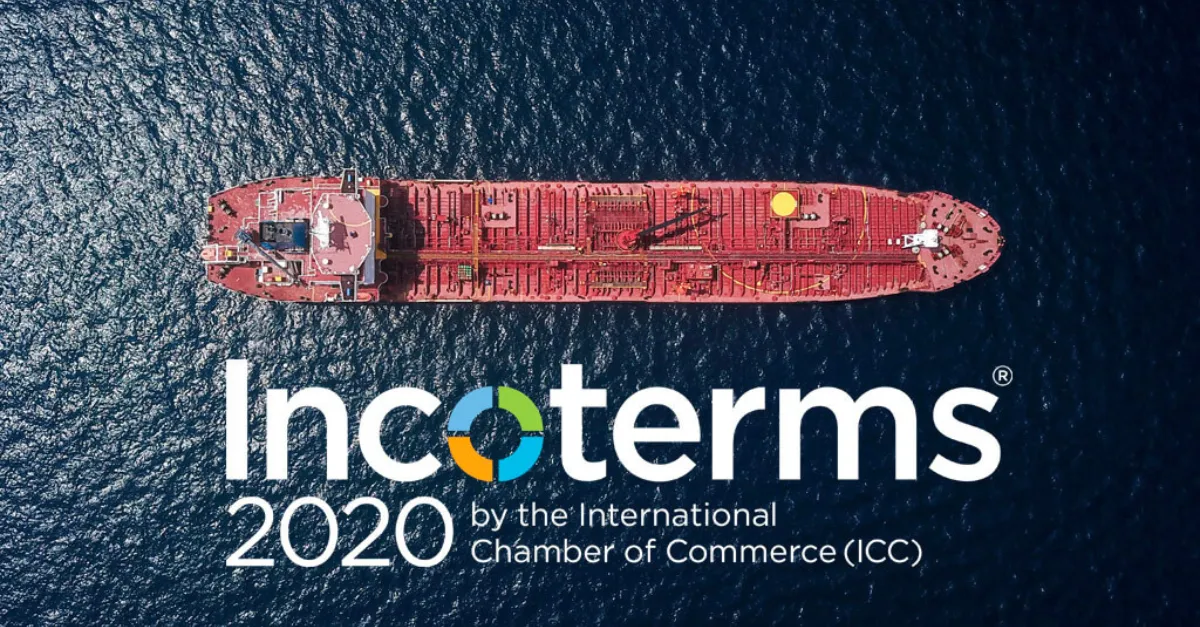In the intricate dance of international trade, clarity is paramount. Every day, trillions of dollars in goods cross borders, and behind each shipment is a contract that dictates the precise responsibilities of the buyer and seller. Misunderstandings in these agreements can lead to costly delays, disputes, and damaged business relationships. To prevent this, the International Chamber of Commerce (ICC) publishes a set of globally recognized trade terms known as Incoterms®.
For logistics professionals, importers, and exporters, a firm grasp of these terms is essential. One of the most practical tools for mastering and applying these rules is the Incoterms® 2020 Wall Chart—a single-page reference that visually breaks down the obligations of each party. This article explores the immense value of this chart and provides a detailed look at the rules it represents.
Why a Wall Chart is an Essential Tool
The Incoterms® rules, while designed for clarity, involve nuanced details. A wall chart serves as a powerful, at-a-glance guide that helps demystify these complexities. Its primary benefits include:
- Visual Clarity: The chart typically uses colors and symbols to clearly delineate whether the buyer or seller is responsible for costs, risks, and insurance at each stage of the shipping journey. This visual format is often easier to process than dense text.
- Quick Reference: Instead of flipping through the official rulebook for a routine query, a logistics manager or sales professional can simply glance at the wall chart to confirm a term’s implications, saving valuable time.
- Error Prevention: By making it easy to compare terms side-by-side, the chart helps parties select the most appropriate rule for their specific transaction and mode of transport, reducing the risk of costly errors.
- Standardization and Training: It serves as an excellent training tool for new team members and ensures that everyone in an organization—from sales to shipping—is speaking the same standardized language of trade.
Understanding the 11 Incoterms® 2020 Rules
The Incoterms® 2020 are divided into two main categories based on the mode of transport. The wall chart masterfully illustrates the key transition points for cost and risk for each of these 11 rules.
Part 1: Rules for Any Mode or Modes of Transport
These seven rules are versatile and can be used for shipments involving air, road, rail, or multimodal transport (a combination of different modes).
1. EXW (Ex Works)
- What it means: This rule places the maximum obligation on the buyer and the minimum on the seller. The seller simply makes the goods available at their own premises (e.g., a factory or warehouse).
- Seller’s Responsibility: To have the goods packed and ready for collection. The seller is not obligated to load the goods onto the buyer’s collecting vehicle or clear them for export.
- Risk and Cost Transfer: Risk and all costs transfer to the buyer the moment the goods are placed at their disposal at the seller’s location.
2. FCA (Free Carrier)
- What it means: The seller delivers the goods to a carrier or another person nominated by the buyer at the seller’s premises or another named place. This is a highly flexible and widely used term.
- Seller’s Responsibility: To load the goods if the named place is their own premises, and to clear the goods for export. If the named place is elsewhere (like a freight forwarder’s warehouse), the seller is responsible for getting the goods there, but not for unloading them.
- Risk and Cost Transfer: Risk and cost transfer from seller to buyer once the goods are delivered to the nominated carrier. A key 2020 update allows buyers to instruct their carrier to issue an “on-board” bill of lading to the seller, facilitating letter of credit transactions.
3. CPT (Carriage Paid To)
- What it means: The seller arranges and pays for the carriage of the goods to a named destination.
- Seller’s Responsibility: To contract for and pay the freight costs to the destination. They also handle export clearance.
- Risk and Cost Transfer: This is a crucial point of distinction. While the seller pays for freight to the destination, the risk transfers to the buyer much earlier—as soon as the goods are handed over to the first carrier at the origin.
4. CIP (Carriage and Insurance Paid To)
- What it means: Similar to CPT, but with the additional obligation for the seller to purchase insurance cover for the buyer’s risk.
- Seller’s Responsibility: To contract for carriage, pay freight to the destination, clear for export, and purchase a high level of insurance coverage (Institute Cargo Clauses A or similar) in the buyer’s name.
- Risk and Cost Transfer: As with CPT, the risk transfers from seller to buyer when the goods are delivered to the first carrier. The insurance is for the buyer’s benefit.
5. DAP (Delivered at Place)
- What it means: The seller delivers the goods when they are placed at the disposal of the buyer on the arriving means of transport, ready for unloading at the named destination.
- Seller’s Responsibility: To bear all costs and risks involved in bringing the goods to the named destination point, including transport and export clearance. The seller is not responsible for unloading or import clearance.
- Risk and Cost Transfer: Risk and cost transfer to the buyer just before the goods are unloaded at the destination.
6. DPU (Delivered at Place Unloaded)
- What it means: This is a new term in Incoterms® 2020, replacing DAT (Delivered at Terminal). It is the only rule that requires the seller to unload the goods at the destination.
- Seller’s Responsibility: To bear all costs and risks to bring the goods to the named destination and to unload them. This includes transport, export clearance, and unloading charges.
- Risk and Cost Transfer: Risk and cost transfer to the buyer once the goods are unloaded at the named place of destination. The buyer is responsible for import clearance.
7. DDP (Delivered Duty Paid)
- What it means: This rule represents the maximum obligation for the seller, essentially a “door-to-door” service.
- Seller’s Responsibility: To deliver the goods to the named destination in the buyer’s country, with all costs and risks borne by the seller. This includes transportation, export clearance, and crucially, import clearance, including the payment of all duties and taxes.
- Risk and Cost Transfer: Risk and cost transfer to the buyer when the goods are at the destination, cleared for import, and ready for unloading.
Part 2: Rules for Sea and Inland Waterway Transport
These four rules are designed specifically for situations where the point of delivery and the point of risk transfer are a port. They are not suitable for containerized shipments where goods are handed over to a carrier at a terminal before being loaded onto a ship (FCA is the correct term for that scenario).
8. FAS (Free Alongside Ship)
- What it means: The seller delivers when the goods are placed alongside the vessel (e.g., on a quay or a barge) nominated by the buyer at the named port of shipment.
- Seller’s Responsibility: To get the goods to the port and alongside the ship and to handle export clearance.
- Risk and Cost Transfer: Risk and costs transfer to the buyer as soon as the goods are alongside the vessel. From that point, the buyer is responsible for loading the goods and all subsequent costs.
9. FOB (Free On Board)
- What it means: A classic and widely used term where the seller delivers the goods on board the vessel nominated by the buyer at the named port of shipment.
- Seller’s Responsibility: To bear all costs and risks until the goods are loaded on board the vessel, including export clearance.
- Risk and Cost Transfer: The risk and costs transfer from seller to buyer at the moment the goods are on board the ship.
10. CFR (Cost and Freight)
- What it means: The seller arranges and pays for the costs and freight necessary to bring the goods to the named port of destination.
- Seller’s Responsibility: To clear the goods for export, pay for the main sea freight, and deliver the goods on board the vessel at the origin port.
- Risk and Cost Transfer: Similar to CPT, the points of risk and cost transfer are different. The seller pays freight to the destination port, but the risk transfers to the buyer once the goods are on board the vessel at the port of shipment.
11. CIF (Cost, Insurance and Freight)
- What it means: Identical to CFR, but with the added obligation for the seller to procure marine insurance against the buyer’s risk of loss or damage during carriage.
- Seller’s Responsibility: The same as CFR, plus the obligation to purchase at least a minimum level of insurance coverage (Institute Cargo Clauses C).
- Risk and Cost Transfer: The risk transfers to the buyer once the goods are on board the vessel at the origin port. The insurance policy is for the buyer’s benefit should anything happen during the main transit.
Conclusion
The Incoterms® 2020 Wall Chart is more than just a piece of paper; it is a vital instrument for ensuring precision in the complex world of global trade. By providing a clear, visual, and constant reference to the 11 rules, it empowers businesses to negotiate better contracts, allocate costs and risks accurately, and avoid predictable misunderstandings. For any company involved in buying or selling goods across borders, making the wall chart a central part of the office environment is a simple yet powerful step toward smoother, more profitable transactions.

